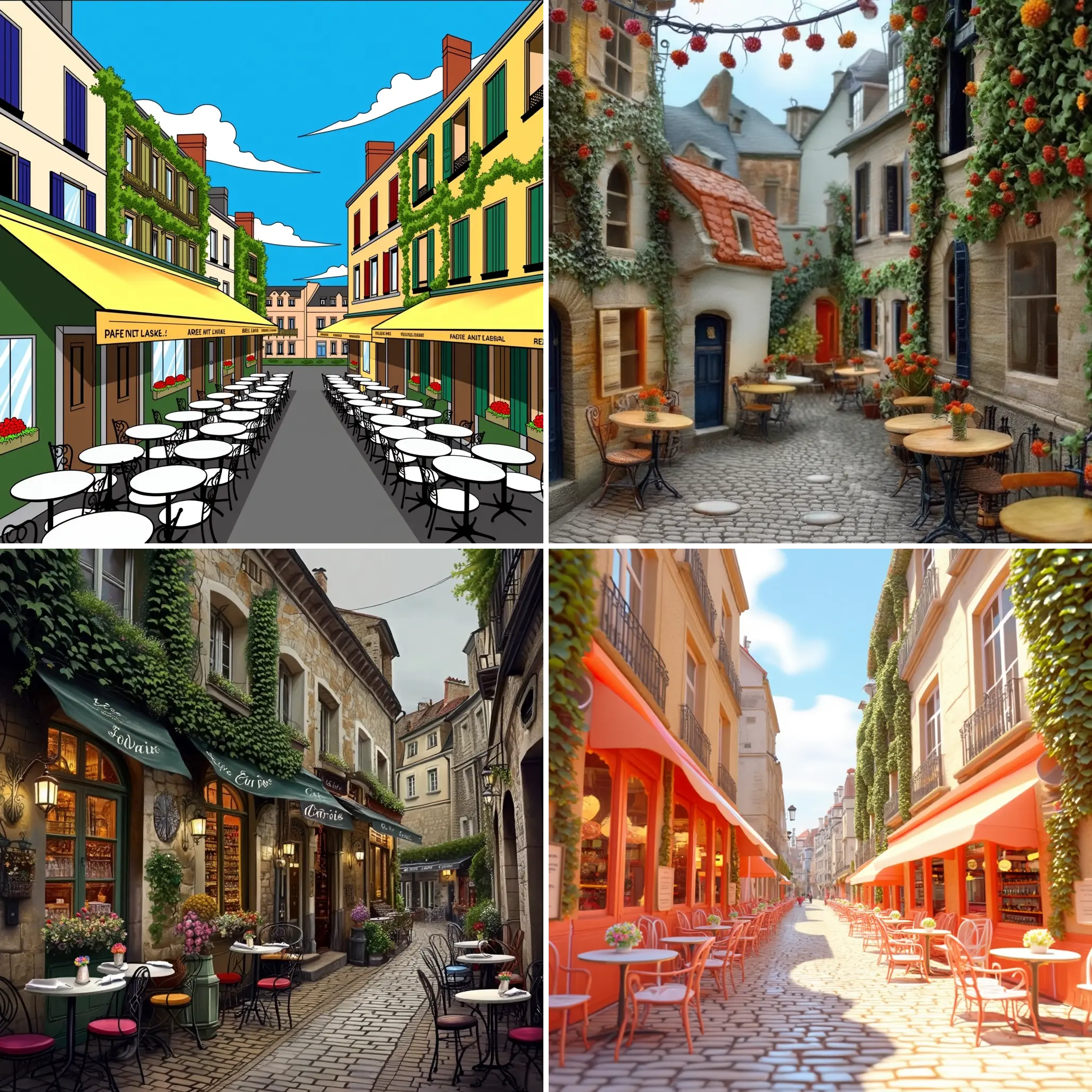ComfyUI Node: InstantID Apply ControlNet
ApplyInstantIDControlNet
CategoryInstantID
cubiq (Account age: 5296days) Extension
ComfyUI InstantID (Native Support) Latest Updated
2024-09-30 Github Stars
1.55K
How to Install ComfyUI InstantID (Native Support)
Install this extension via the ComfyUI Manager by searching for ComfyUI InstantID (Native Support)- 1. Click the Manager button in the main menu
- 2. Select Custom Nodes Manager button
- 3. Enter ComfyUI InstantID (Native Support) in the search bar
Visit ComfyUI Online for ready-to-use ComfyUI environment
- Free trial available
- 16GB VRAM to 80GB VRAM GPU machines
- 400+ preloaded models/nodes
- Freedom to upload custom models/nodes
- 200+ ready-to-run workflows
- 100% private workspace with up to 200GB storage
- Dedicated Support
InstantID Apply ControlNet Description
Node for integrating InstantID with ControlNet for advanced facial recognition and image conditioning in AI art projects.
InstantID Apply ControlNet:
ApplyInstantIDControlNet is a specialized node designed to integrate the capabilities of InstantID with ControlNet, enabling advanced facial recognition and control functionalities within your AI art projects. This node leverages the power of InstantID for precise face analysis and ControlNet for applying conditioning to images, allowing for enhanced control over image generation processes. By combining these technologies, ApplyInstantIDControlNet provides a robust solution for tasks that require detailed facial feature manipulation and conditioning, making it an essential tool for AI artists looking to achieve high levels of detail and accuracy in their work.
InstantID Apply ControlNet Input Parameters:
face_embeds
This parameter represents the facial embeddings generated by the InstantID system. These embeddings are crucial for identifying and analyzing facial features within the image. The quality and accuracy of these embeddings directly impact the effectiveness of the node in applying facial controls.
control_net
This parameter refers to the ControlNet model that will be used to apply conditioning to the image. ControlNet is responsible for integrating the facial embeddings and applying the desired transformations to the image. The strength and configuration of the ControlNet model can significantly influence the final output.
image_kps
This parameter stands for image keypoints, which are specific points on the face that are used to guide the transformations applied by ControlNet. These keypoints help in accurately mapping the facial features and ensuring that the conditioning is applied correctly. This parameter is optional but can enhance the precision of the transformations.
positive
This parameter represents the positive conditioning data that will be used to influence the image generation process. Positive conditioning helps in guiding the model towards desired features and characteristics in the output image.
negative
This parameter represents the negative conditioning data, which is used to steer the model away from undesired features and characteristics. By providing both positive and negative conditioning, you can achieve more controlled and refined results.
strength
This parameter controls the intensity of the conditioning applied by ControlNet. It ranges from 0.0 to 10.0, with a default value of 1.0. Adjusting the strength allows you to fine-tune the impact of the conditioning on the final image, with higher values resulting in stronger effects.
start_at
This parameter defines the starting point of the conditioning application within the image generation process. It ranges from 0.0 to 1.0, with a default value of 0.0. This allows you to control when the conditioning begins to take effect.
end_at
This parameter specifies the endpoint of the conditioning application within the image generation process. It ranges from 0.0 to 1.0, with a default value of 1.0. This allows you to control when the conditioning stops affecting the image.
mask
This optional parameter allows you to provide a mask that specifies which parts of the image should be affected by the conditioning. Using a mask can help in applying transformations selectively, ensuring that only specific areas of the image are modified.
InstantID Apply ControlNet Output Parameters:
conditioning
The output of this node is the conditioned image, which has been processed using the provided facial embeddings, ControlNet model, and conditioning data. This output represents the final result of the transformations applied to the image, incorporating the specified facial features and conditioning effects.
InstantID Apply ControlNet Usage Tips:
- To achieve the best results, ensure that the facial embeddings provided are of high quality and accurately represent the facial features you want to manipulate.
- Experiment with different strength values to find the optimal level of conditioning for your specific use case. Higher values can produce more pronounced effects, while lower values can result in subtler transformations.
- Utilize the mask parameter to apply conditioning selectively, allowing you to focus on specific areas of the image without affecting the entire composition.
InstantID Apply ControlNet Common Errors and Solutions:
"No face detected, unable to extract the keypoints!"
- Explanation: This error occurs when the node is unable to detect any faces in the provided image, which is necessary for generating facial embeddings and keypoints.
- Solution: Ensure that the input image contains clear and visible faces. If the image quality is poor or the faces are obscured, try using a different image or improving the visibility of the faces.
"Invalid strength value"
- Explanation: This error occurs when the strength parameter is set to a value outside the allowed range (0.0 to 10.0).
- Solution: Adjust the strength parameter to a value within the specified range. The default value is 1.0, which is a good starting point for most applications.
"ControlNet model not found"
- Explanation: This error indicates that the specified ControlNet model could not be located or loaded.
- Solution: Verify that the ControlNet model path is correct and that the model files are accessible. Ensure that the model is properly installed and configured in your environment.
InstantID Apply ControlNet Related Nodes
RunComfy is the premier ComfyUI platform, offering ComfyUI online environment and services, along with ComfyUI workflows featuring stunning visuals. RunComfy also provides AI Playground, enabling artists to harness the latest AI tools to create incredible art.




